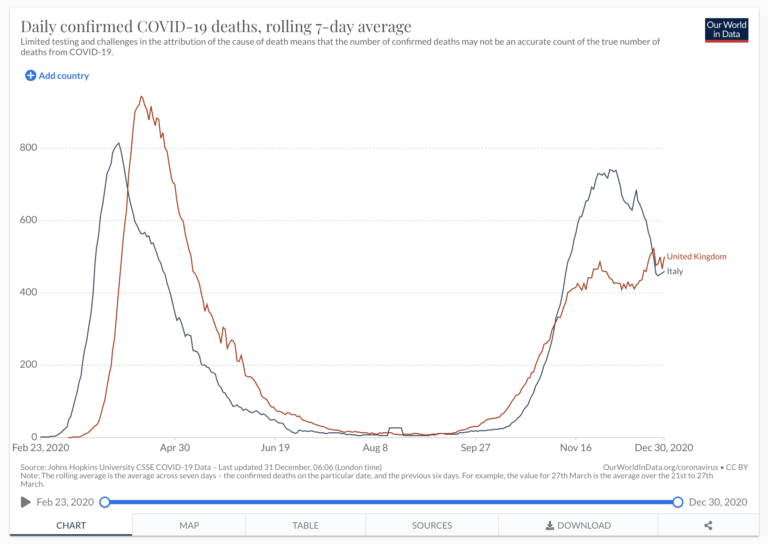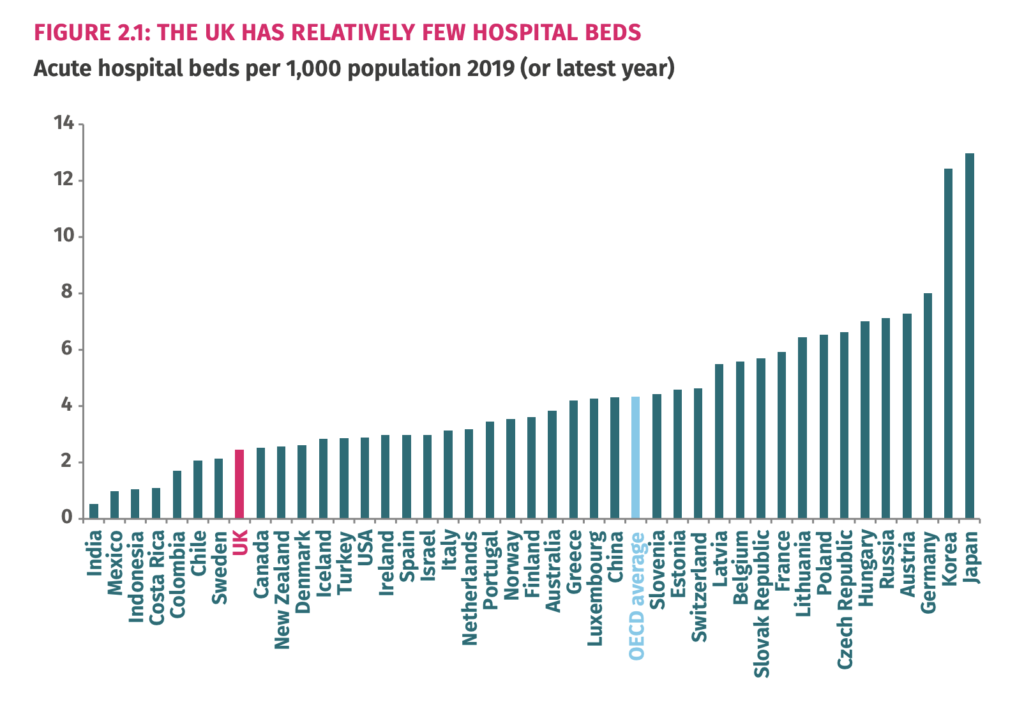Simon says
“We’re back in the eye of the storm,” said NHS Chief Executive Sir Simon Stevens. Yes we are. He made no admission of how we got into this storm, nor explained how we’re going to get out of it. His Five Year Plan for the NHS lying in tatters, his most decisive contribution to the COVID-19 crisis was to simply farm off NHS patient care wholesale to the private sector – essentially, using UK taxes to keep the entire private healthcare sector afloat during the height of the crisis. Sir Simon described it as an “exceptional deal” even though many private hospitals were paid to stay open while empty – exceptional indeed!
“By late Spring,” he continued, “we hope to have offered vaccinations to all vulnerable people”. Yes Simon, but winter has just started, and there’s every possibility that this pandemic wave may finally breach NHS surge capacity.
Sir Simon ended, “Now is the time to record our enormous debt of gratitude and our huge thanks”. By this time, I don’t think NHS healthcare workers are paying any attention. Like the district general hospital’s PFI manager during a cardiac arrest call, he has briefly become an irrelevance.
Simon Stevens says the NHS is in a 'storm', but this is not a capricious weather event. Both the pandemic and the catastrophic consequences of cutting NHS services to the bone were very predictable. Click To Tweet
How did we get here?
We had 981 deaths in a single day on Wednesday, that’s the highest number since April and it’s trending upwards. Shaun Lintern from the Independent recently reported that two of the biggest hospitals in the UK – University College London and the Royal London – are in crisis mode, actually constructing new ICU wards because their existing infrastructure has already been overwhelmed by the latest surge.
In February 2020, I remember watching a webinar from anaesthetists who had invited an intensive care director to speak about the crisis overwhelming his ICU unit in Northern Italy.
I remember clearly his words, “our ICU facilities and our ICU standards have been completely destroyed by this outbreak… You have a very, very short time. If you are not being prepared to double your ICU beds every 3 or 4 days, this is going to be a mess. This is the strong message I want to leave you is… get ready, get prepared… You have the great chance to be maybe 15 days behind us… you have time to reshape and redeploy….”.
Dr Enrico Storti was right – we were almost exactly 15 days behind Italy. For sure, the Government must have been warned at the highest level, and – for whatever reason – they failed to take action. This one catastrophic bungle of indecisiveness cost tens of thousands of lives, but unbelievably once again we are curving up behind Italy.
Bearing in mind that systematic review of the 1918 pandemic and subsequent pandemics has shown that “increased severity in second and later pandemic waves may be the rule rather than the exception” and that the Government’s own SPI-M modelling summary warns about second waves in major pandemics, the Government’s slow response to the current COVID-19 surge raises serious questions. Even a novice epidemiologist could look at the graph below and see where we are heading. Why did we cancel Christmas literally 5 days before Christmas Day?

So what do we do now?
Even the bad solutions being proposed by the Government are simply re-hashed bad solutions from the past. They failed previously and they will fail again. Re-activating the Nightingale Hospitals does not provide a viable solution. The Government can’t simply hire a giant warehouse and stick lots of beds in it. Even if they get hold of sufficient ventilators, they will not be able to find the ICU specialist doctors to intubate those patients, the ICU specialist nurses to operate those ventilators, the infrastructure to deliver high quantities of high-flow oxygen, or the range of allied expertise – in infectious diseases, radiology, nephrology or coagulation – required to manage the complex requirements of patients with COVID-19. Interestingly, a conservative estimate is that the failed Nightingale Hospitals scheme cost the equivalent of 963,115 nights of care in a hospital, or 2,640 more proper beds open throughout 2019.
This is now a national emergency and there is a serious risk of both another 80,000 deaths and devastating long-term economic damage. We need to think outside the box:
- Bureaucrats and inefficient management consultants should step aside. We need to promote chief executives like Prof Marcel Levi who lead from the front, have clinical vision and clearly understand the enormity of this crisis.
- Tier 5 lockdown in affected areas of high population density (including London).
- Rapid legislation for time-limited requisition of private hospitals and care homes in the national interest.
- Extensive deployment of the army to vaccinate efficiently and quickly, and contain the pandemic in high-risk settings like large care homes.
- Bold economic intervention to ensure that the poorest sections of our society can comply with restrictions, because effective pandemic management cannot exclude any social sector.
We also need our political leaders to show some courage, stop obstructing our legal action for disclosure of the pandemic reports following Exercise Cygnus, act in the national interest, and have an honest open conversation now in Parliament about the Department of Health’s secret plan for population triage if things get really bad. Before we get there, we have to be prepared to “break some rules” in intensive care, and draw up guidelines for a situation where doctors and nurses may have to perform duties which are outside of their expertise.
This is now a national emergency and there is a serious risk of both another 80,000 deaths and devastating long-term economic damage. We need to think outside the box and take bold, decisive action. Click To Tweet

A failure of vision and leadership at the very top of the NHS
The fact is that NHS England’s board of directors – at the same time as they were preparing a 2017 report following Exercise Cygnus on how the Government could triage the population in case of a likely future massive pandemic – were working on a Five Year Plan which endeavoured to “improve efficiencies” by 2000 to 3000 hospital beds. Data from January 2020 showed that there were only 150 ICU beds in the whole of London, we had one third of the ICU beds per capita compared to Germany, we knew we didn’t have sufficient capacity to manage a sizeable pandemic, we knew a viral pandemic was our most likely and most catastrophic civil emergency, and yet the Department of Health and NHS directors were cutting beds!
Fearless innovators in the eye of the storm
NHS England’s board of directors has become increasingly unaccountable since the Health and Social Care Act, and almost invisible during this pandemic – there has been a crisis of leadership. The healthcare establishment have been largely self-serving and ineffective in representing the interests of either healthcare workers or patients whenever NHSE has made bad decisions. The heroes of this latest pandemic surge will undoubtedly be the newly emerging NHS leaders who are fighting for the survival of their patients and have nothing to lose. If you really want to know what’s happening, then follow innovative grassroots organisations like 54000doctors, EveryDoctor and the Doctors Association UK. They are engaged with the situation on the ground, ready to challenge the establishment, and led by bold young healthcare professionals who are actually working – and sometimes risking their lives – right at the centre of Simon’s storm.
The heroes of this latest pandemic surge will undoubtedly be the newly emerging NHS leaders who are fighting for the survival of their patients and have nothing to lose. If you really want to know what's happening, then follow the bold, young… Click To Tweet


Thank you Moosa
Lying is indeed the operative word.
Excellent work Moosa. The [people at the top/ behind the] ‘system’ have ensured it is broken, imo, beyond repair. Sheeple like activity of the bulk of the staff within excepting you and the others above etc will ensure it remains as is.
The problem with NHS England is that the majority of the board have a background in supermarkets and banking. Surely the majority should be clinical?
Excellent article but you really should put a date on it.